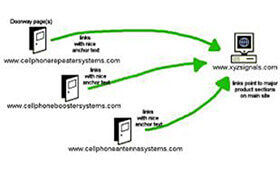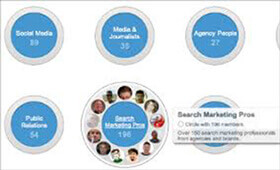
What is on-page optimization?
February 10, 2016
SEO Success Pyramid
February 15, 2016While Google’s recent algorithm update seems to have captured the lion’s share of page view-pumping SEO posts, the doorway page update has seen relatively few screaming SEO headlines. Thus, I thought I’d give the poor, ignored algorithm its due.
Last month, Google announced that it would be releasing a “ranking adjustment” to deal with doorway pages, noting that this update would have “a broad impact” on sites utilizing doorway campaigns.
I have heard a few rumblings here and there — and I have definitely seen “Gateway Page” warnings in Google Webmaster Tools in the past — but I have seen no evidence that this update has been released, particularly no “broad impact” evidence, so there may still be time to avoid this one if you are at risk. Here are some steps you can take:
1st way: Avoid Empty Pages
Take down empty pages.
Don’t push new pages live until after unique content is available for them.
2nd way: Avoid Hard-To-Find Pages
Pages that are not tightly integrated into your site navigation — but are designed to drive traffic to your site — may become increasingly problematic. Consider cleaning up your site navigation so that human visitors can find their way around your site, and you don’t have pages that are difficult or impossible for a human visitor to find that are focused on driving search traffic.
3rd way. Prime The Pump
For pages that depend on upon customer- or staff-generated content — such as reviews/testimonials, check-ins, blogs, and galleries — stress the importance of generating activity early, and with regularity.
Consider holding off on deploying such pages until you have pre-seeded or acquired enough unique legitimate content to justify them.
4th way: Avoid Duplicate Content
Take another look at your static marketing content. Duplicate content is, in general, already something that can cause problems in Google. For this latest update, however, it sounds as though the penalty may increase to pages that are repetitive and duplicative — for example, multiple pages with substantially the same content focused on the same city targeting different keywords.
For locally-focused pages, consider doubling-down on single, effective local pages for each location, leveraging the best of your professionally written marketing content as well as locality-specific customer reviews and testimonials, user check-ins, and media.
If you have any pages on your site that are set up to show the same content — such as customer- or staff-generated content such as reviews/testimonials, check-ins, or blogs — reconfigure your site so that any given piece of content appears on only one page.
Additionally, if you are using duplicate content to drive a separate purpose that is not search focused — for example, technician pages detailing the work done (and reviews received) by particular staff members — make all but one version of those duplicate pages no-index or canonicalize the dupes to one version.
5th way: Avoid Multiple Sites If Possible
If you have more than one separate site contributing to your SEO:
Make sure you can justify why you need each separate domain v. having all of the content on a single site. Dramatically different services might make sense on different domains, but an attorney having a different domain for each area of law they practice for each city they service is probably stretching it. And if all of your domains use the same phone number or link to the same contact form, it’s probably at risk.
Make sure that you avoid content duplication across the sites, much as you would within a single site.




